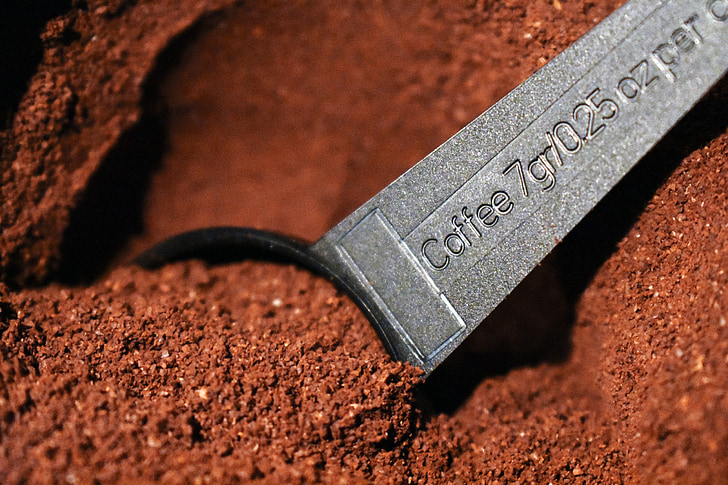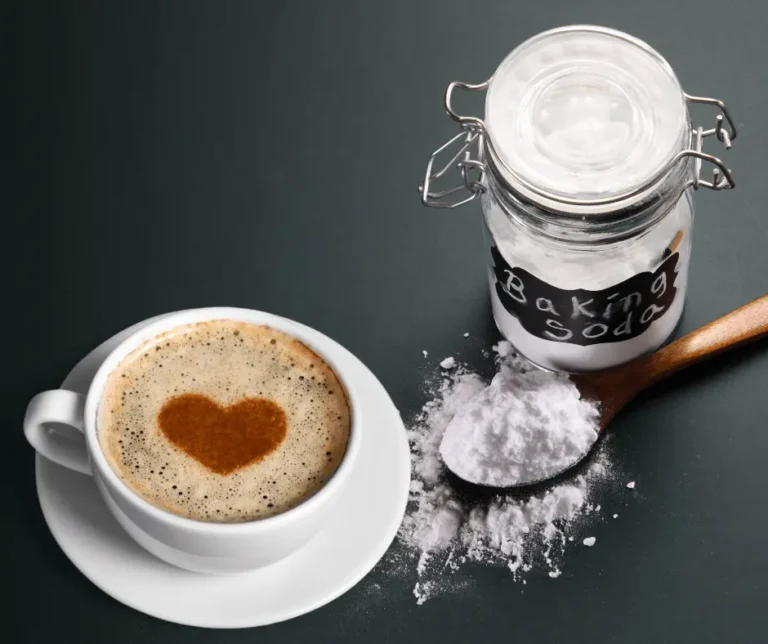How Long Does Ground Coffee Last? Helpful Storing Guides
In the world of coffee aficionados and casual drinkers alike, understanding the shelf life of ground coffee is akin to unlocking the secret to everlasting flavor and aroma. With this comprehensive guide titled “How Long Does Ground Coffee Last,” we delve deep into the heart of coffee preservation, unraveling the intricacies of storage, freshness, and taste. Our expertise is grounded in years of exploring the coffee industry’s nuances, from the intricacies of bean selection to the science of brewing. This article not only provides you with the essential knowledge to extend the lifespan of your ground coffee but also uncovers the impact of various storage conditions on its quality. Whether you’re a seasoned barista or a homebrew enthusiast, the insights shared here are designed to enhance your coffee experience, ensuring every cup you brew is as fresh and flavorful as possible. Prepare to be intrigued as we reveal how to keep your coffee at its peak long after grinding, why freshness is so critical, and what you might be doing wrong in your current coffee storage regimen. Join us on this journey to elevate your coffee game, one scoop of ground coffee at a time.
Contents
- 1 The Basics of Coffee Freshness
- 2 Understanding Coffee’s Enemies: Oxygen, Light, Heat, and Moisture
- 3 Whole Coffee Beans vs. Ground Coffee: A Freshness Comparison
- 4 How Packaging Influences Coffee Freshness
- 5 Storage Solutions for Maximum Freshness
- 6 How to Tell if Your Coffee Is Fresh?
- 7 Maximizing Coffee Shelf Life
- 8 The Best Way to Buy Coffee for Freshness
- 9 Advanced Coffee Preservation Techniques
- 10 Seasonal and Geographic Considerations in Coffee Storage
- 11 Creative Uses for Coffee Past Its Prime
- 12 Conclusion
The Basics of Coffee Freshness

Coffee is best when consumed shortly after roasting, within 2-4 weeks for whole bean and 2-20 minutes for ground. Over time, the aromatic oils and gases that give coffee its flavor break down through oxidation and evaporation, leading to stale and flat taste.
Signs of stale coffee include lack of aroma, cardboard or woody tones, acidic or sour flavor, and coffee that tastes ashy or bitter. Coffee that has completely spoiled from bacteria or mold growth may smell sour, fermented, or rotten.
Factors Influencing Coffee Freshness:
- Exposure to oxygen
- Light
- Heat
- Moisture
- Time since roasting
- Roast level
- Grind size
- Storage conditions
Proper storage helps slow degradation and prolong shelf life. Freezing beans or nitrogen gas flushing are methods used by roasters for long-term preservation.
Understanding Coffee’s Enemies: Oxygen, Light, Heat, and Moisture
Coffee’s biggest enemies are environmental factors that speed up the chemical breakdown of flavor compounds. The four main offenders are:
Oxygen
- Causes coffee to oxidize and go stale through reactions with atmospheric gases
- Begins immediately after roasting
- Accelerated by grinding, which exposes more surface area to oxygen
Light
- UV light causes undesirable chemical reactions
- Both natural and artificial light can degrade taste over time
- Store coffee in opaque, light-blocking containers
Heat
- High temperatures accelerate coffee’s rate of deterioration
- Store beans/grounds in a cool, dark place like a pantry or cupboard
Moisture
- Absorption of moisture damages bean cellular structure
- Causes ground coffee to absorb odors and go rancid faster
- Use airtight containers to prevent humidity buildup
Whole Coffee Beans vs. Ground Coffee: A Freshness Comparison
Whole coffee beans stay fresh much longer than pre-ground coffee.
| Whole Beans | Ground Coffee |
| Lasts 2-4 weeks | Lasts 2-20 minutes |
| Shelf life up to 1 year with proper storage | Quickly stales within hours |
| Oxygen only penetrates outer surface | More surface area exposed to oxygen |
| Retain most gases and aromatic oils | Degassing accelerates after grinding |
| Less surface area for moisture absorption | Moisture causes clumping and staleness |
For maximum freshness, grind whole beans immediately before brewing. However, grinding small batches as needed may not always be practical.
How Packaging Influences Coffee Freshness
Packaging is important for limiting coffee’s exposure to elements that degrade freshness. Some effective packaging materials and methods include:
- Opaque bags or containers to block light
- One-way valve bags that allow CO2 to escape while keeping oxygen out
- Vacuum-sealed bags to remove oxygen
- Nitrogen flushed bags with inert gas to displace oxygen
- Metalized foil bags with inner plastic lining to block light and moisture
Look for bags that are triple-layered, as the outer barrier helps keep aromatic oils in. For prolonged storage,store coffee in an airtight container in a cool, dark place.
Storage Solutions for Maximum Freshness
Follow these tips for keeping your coffee tasting its best:
- Store in an airtight container made of ceramic, glass, or stainless steel
- Choose a dark, cool location like a pantry or cupboard
- Avoid storage in the refrigerator or freezer
- For ground coffee, use small resealable bags to limit oxygen exposure
- Rinse containers regularly to prevent odor absorption
- Keep storage area and containers clean and free of moisture
- Buy only in small batches to limit shelf life
- Freeze any extra beans in vacuum-sealed packaging
- For travel, use small opaque airtight containers
Quick Coffee Storage Guide:
| Storage Method | Whole Beans | Ground Coffee |
| Airtight container | 2-4 weeks | 3-5 days |
| Open-air container | 1 week | 1-2 days |
| Freezer | 6 months | 1 month |
| Refrigerator | 1 month | 3-5 days |
| Paper bag | 1-2 weeks | 1-2 days |
Impact of Roast Level on Shelf Life
- Darker roasts last longer than lighter roasts
- Extended bake time reduces moisture content
- Oils help protect against oxidation
- Lighter roasts have more aromatics that degrade quickly
Impact of Coffee Origin and Processing
- African coffees have complex flavor profiles but shorter shelf life
- Asian coffees last longer but have milder flavors
- Dry/natural processing produces more oils for protection
- Wet/washed processing leaves more moisture leading to quicker staling
Vacuum-Sealing and Nitrogen Flushing Techniques
- Vacuum-sealing removes oxygen to prevent oxidation
- Nitrogen gas displaces oxygen for extended shelf life
- Used by roasters for green coffee beans before roasting
- Specialty packaging required – not feasible at home
The Role of Grind Size in Coffee Freshness
- Finer the grind, the quicker coffee stales
- More surface area exposed to oxygen
- Coarser grinds retain freshness longer
- Whole beans best for long-term storage
Optimal Water for Brewing and Its Effect on Freshness
- Pure, clean water is ideal
- Chlorine or bad tasting water exacerbates stale flavors
- Filtered water helps coffee taste fresher
- Best results with neutral pH, medium hardness
How to Tell if Your Coffee Is Fresh?

Here are some tips for identifying freshness through sight, smell, and taste:
- Smell – Fresh coffee has a strong, pleasant aroma. Stale coffee has weak or stale, musty odors.
- Look – Fresh beans appear dark, oily, and glossy. Old beans lose sheen and appear dried out or chalky.
- Listen – Give beans a shake – fresh beans make a rattling sound while stale beans are quiet.
- Taste – Fresh coffee has a smooth, balanced flavor without bitterness or sourness. Stale coffee tastes flat, cardboardy, or unpleasantly acidic.
- Texture – Brewed coffee made from fresh grounds will have a rich, velvety mouthfeel. Old coffee feels thin or gritty.
- Crema – Freshly roasted beans produce a thicker golden crema when brewed. Stale beans have thin, discolored crema.
Remember, if it doesn’t seem or taste quite right, the coffee is likely past its prime.
Maximizing Coffee Shelf Life
Follow these pro tips for extending the life of your coffee:
- Store beans in a vacuum-sealed mason jar
- Place an oxygen absorber in the storage container
- Place beans in vacuum-sealed packets, remove air manually
- Freeze beans for long-term storage up to 6 months
- Buy smaller bags to limit oxygen exposure after opening
- Avoid open bins/hoppers which expose beans to air
Freezing Coffee: Pros and Cons
Pros:
- Eliminates oxygen, moisture, light
- Halts staling reactions
- Locks in freshness and aroma
Cons:
- Risk of moisture condensation when thawing
- Can impact flavor nuances
- Bean cell structure may be damaged
The Importance of the Coffee Bag
- Multi-layered bags help block oxygen, light, moisture
- Inner linings prevent aroma loss
- Textured surfaces reduce friction to minimize degassing
- One-way valves allow gases to escape while keeping oxygen out
Health and Cost Implications of Coffee Storage
- Stale coffee may cause indigestion or stomach upset
- Rancid oils may cause inflammation or other health issues
- Replacing stale coffee is costly – proper storage saves money.
Sustainability and Recycling Coffee Packaging
- Look for bags made of renewable resources like cotton
- Avoid plastic bags – recycle any extra packaging
- Compost used coffee grounds
- Reuse storage containers to reduce waste
The Best Way to Buy Coffee for Freshness
- Purchase beans with a recent roast date, ideally within past 2 weeks
- Check the packaging date if roast date is unavailable
- Choose bags with one-way degassing valves
- Opt for darker roasts for slightly longer shelf life
- Buy only enough for 1-2 weeks of use
- If buying in bulk, immediately divide into smaller airtight containers
Should You Buy Whole Beans or Pre-Ground?
For maximum freshness, whole beans are best. But for convenience, consider:
- Small batches of pre-ground (1-2 weeks’ worth)
- Grinding small amounts at the grocery store
- Using pre-ground in cold brew recipes
- Investing in an at-home burr grinder
Analysis of Buying Strategies, Including Coffee Subscription Services
Local roaster:
- Freshest beans
- Limited selection/availability
- Support local businesses
Coffee shop:
- Convenient
- Beans likely 1-4 weeks post-roast
- More expensive per pound
Supermarket:
- Wide availability
- Often stale beans, check dates
- Look for major specialty roaster brands
Online roasters/subscriptions:
- Doorstep delivery, convenience
- Control frequency, flexible plans
- Pre-ground or whole bean options
- May lack local roaster freshness
Advanced Coffee Preservation Techniques
Roasters and companies are innovating new ways to extend coffee freshness:
- Pressurized nitrogen canisters
- Individual vacuum-sealed packs
- Carbon dioxide degassing chambers
- High barrier foil packaging
- Oxygen-absorbing pods/tabs
- Shelf-stable liquid coffee concentrates
- Canning and retort pouch processing
However, home storage is limited to proven methods like freezing and airtight containers.
Seasonal and Geographic Considerations in Coffee Storage
Coffee freshness and shelf life is impacted by seasons and regional climate:
- Store in a cooler place in summer, warmer in winter
- Avoid temperature fluctuations that produce condensation
- Areas with more humidity require more care
- Take coffee on an airplane as a carry-on to prevent freezing
- In hot climates, store beans in the refrigerator
Coffee growing region also influences stability:
- Americas: more balanced, stable
- Africa: complex but degrades faster
- Asia/Pacific: milder flavor, slower to stale
Creative Uses for Coffee Past Its Prime
Don’t toss old beans or grounds – give them new life.
- Use as plant fertilizer or compost
- Exfoliating skin or face scrub
- Dye for fabrics or Easter eggs
- Deodorize fridges, counters, and hands
- Repel garden slugs and pests
- Clean pots, pans, appliances by scrubbing
- Fire starter and camping kindling
Conclusion
Coffee is delicate and starts losing its flavorful compounds as soon as it’s roasted. By understanding what degrades coffee and the proper storage methods, you can enjoy fresh, tasty coffee for weeks after purchase. Experiment with airtight containers, small batches, and freezing to find the best way to preserve coffee based on when and how you use it. Most importantly, learn how to recognize the sensory cues of stale coffee so you can fully appreciate and benefit from each delightful cup.
https://bamboowokmanvel.com/food-drink/coffee/
Harmony Saunders is the CEO and founder of Bamboo Wok, a family-owned and operated Chinese restaurant that has been serving the Manvel, Rosharon, and Alvin communities for more than nine years. Our delicious dishes are made from scratch with the best ingredients, vegetables are fresh cut daily in our kitchen, and poultry is delivered every two days.
So whether you’re craving Chinese food for the family or need catering for your next event, please give us a try! We know you won’t be disappointed with our fresh, authentic Asian fare.













